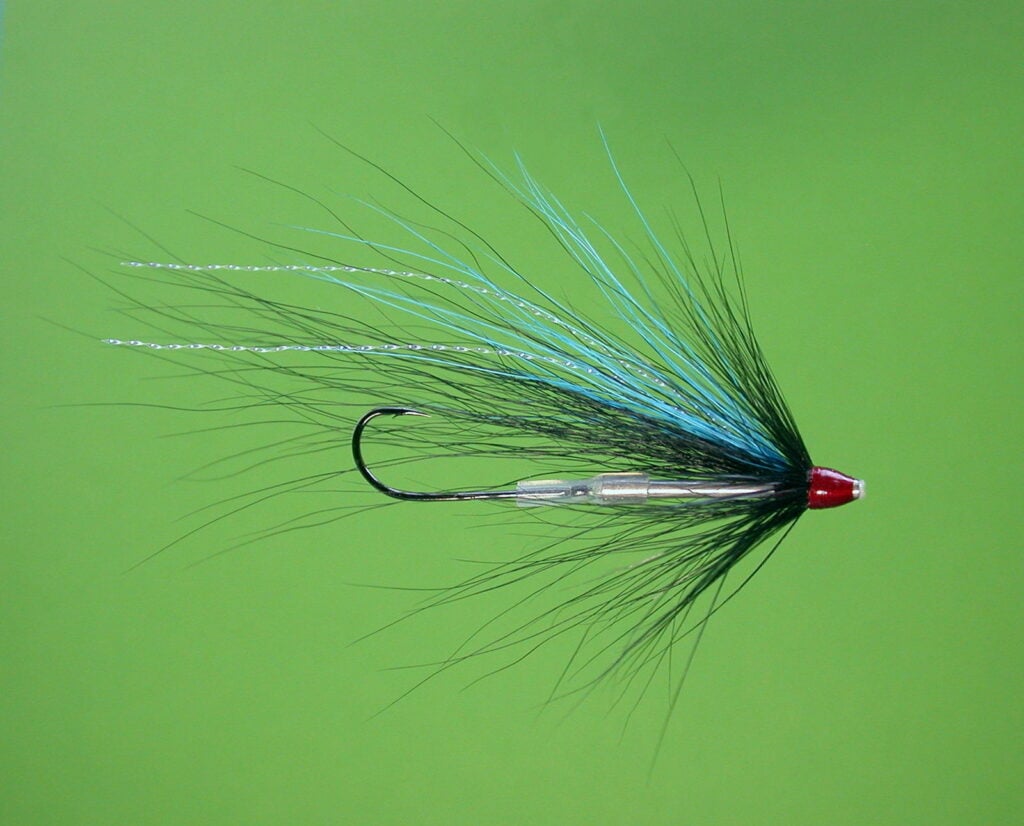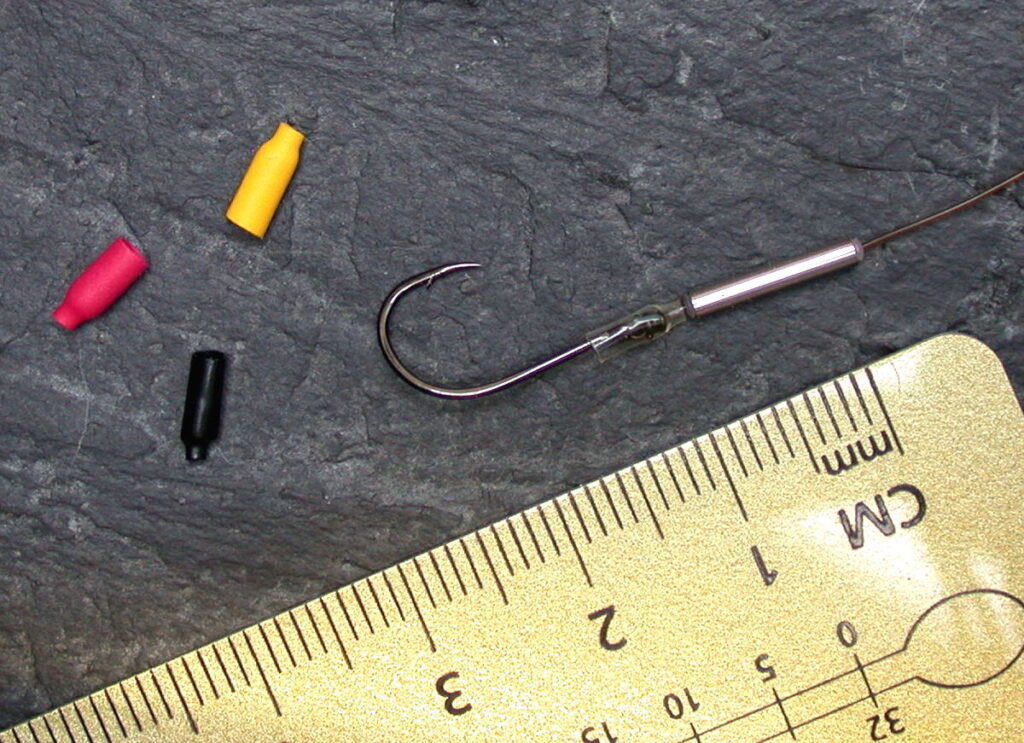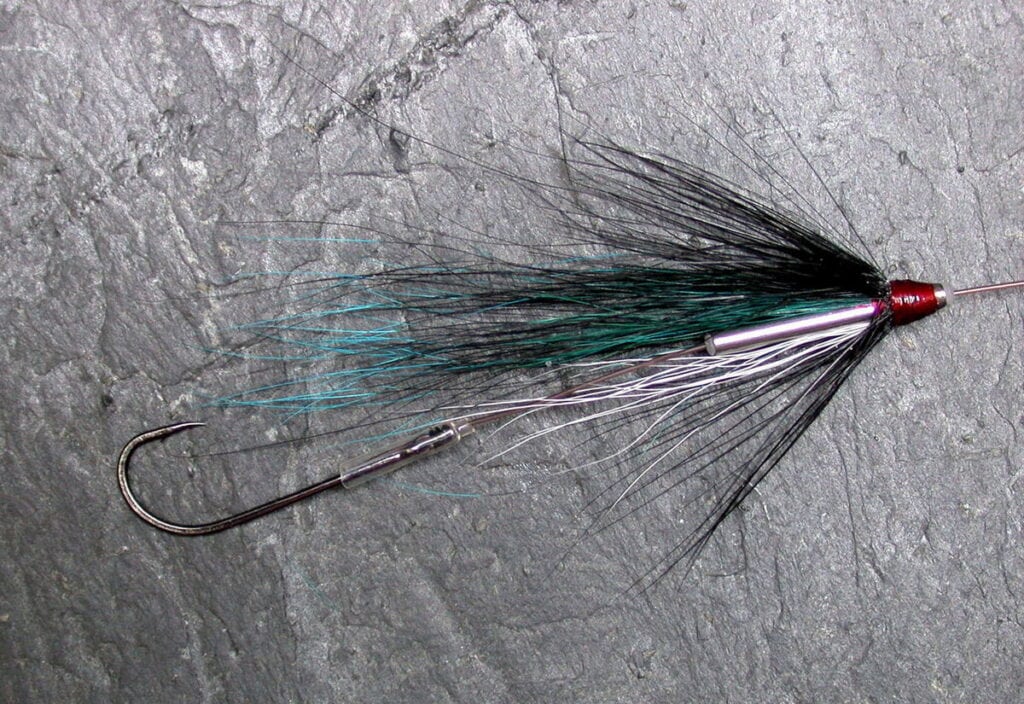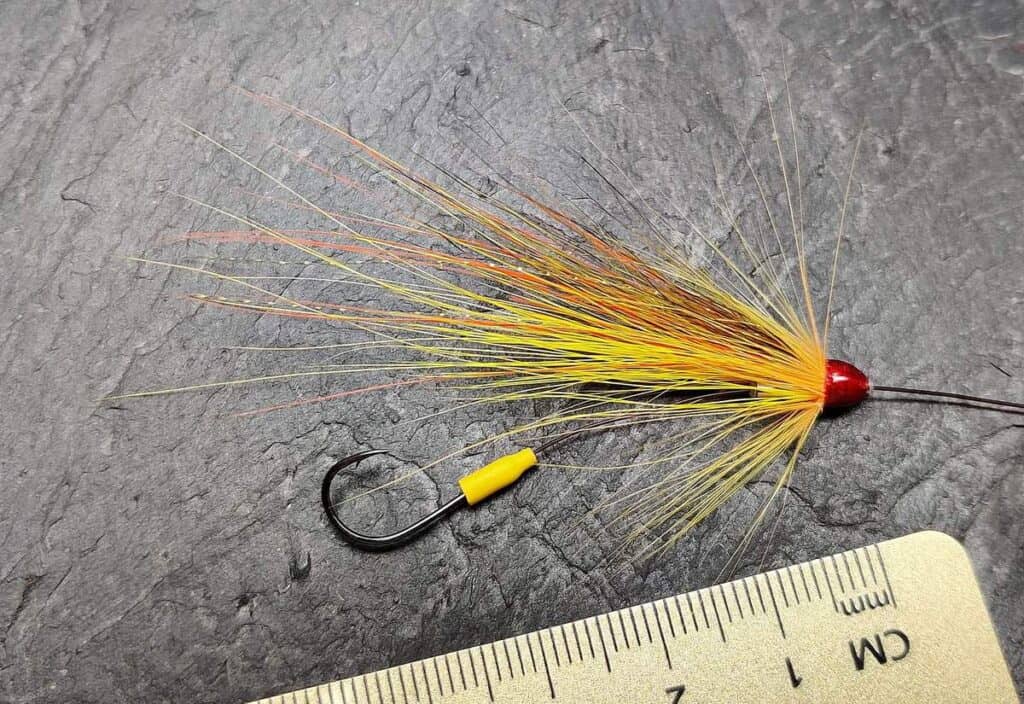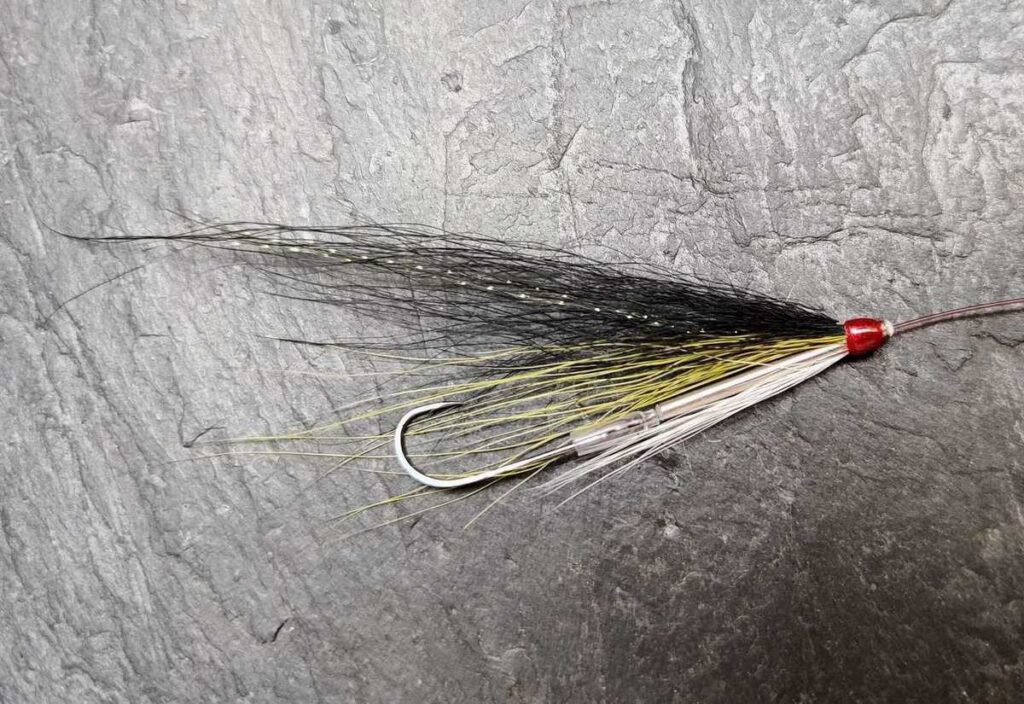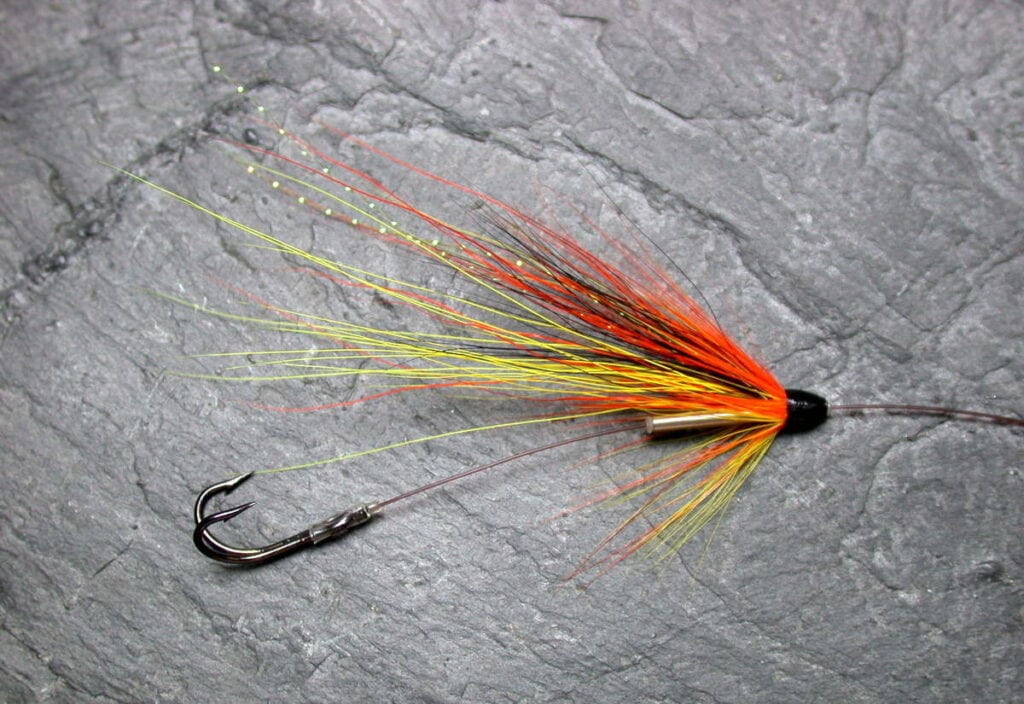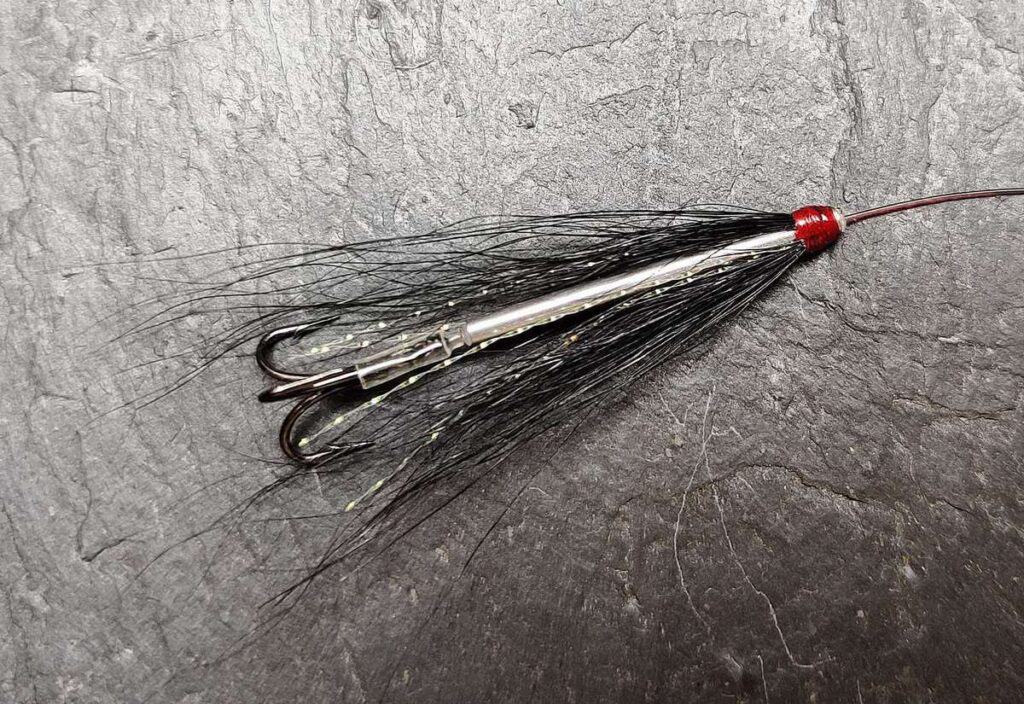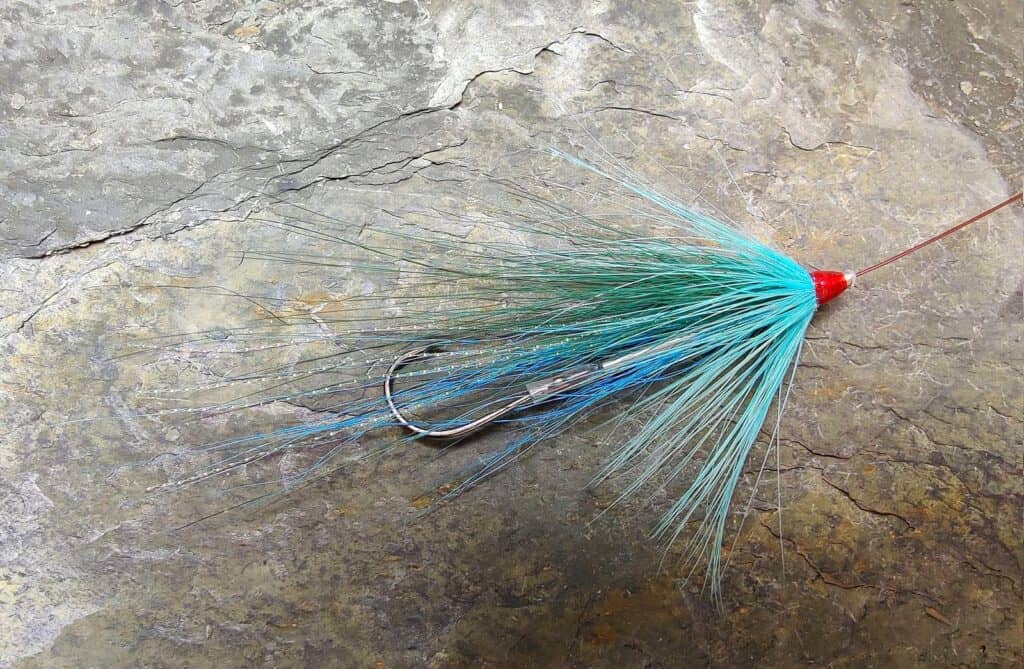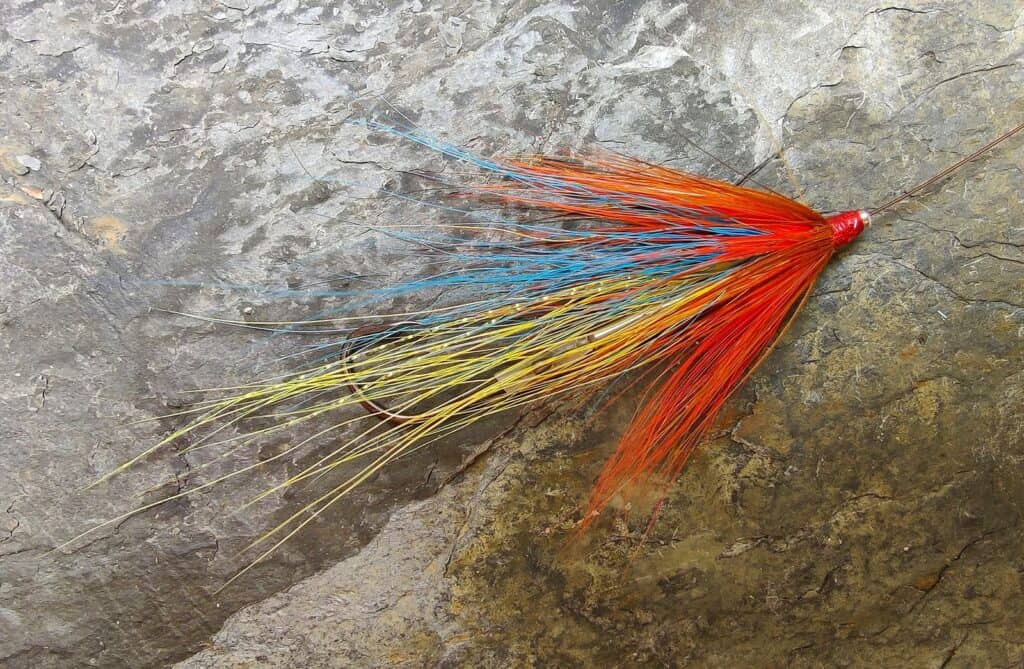Hooks for Tube Flies
Single, double and treble hooks may be used effectively as tube fly hooks, for salmon, sea trout or steelhead. Singles, doubles and small trebles tend to hook fish equally well and all are fairly easily removed when releasing fish. Increasing regulation, however, often now restricts the use of treble hooks in salmon and sea trout fishing. A good option, then, is to arm our tube flies with single hooks.
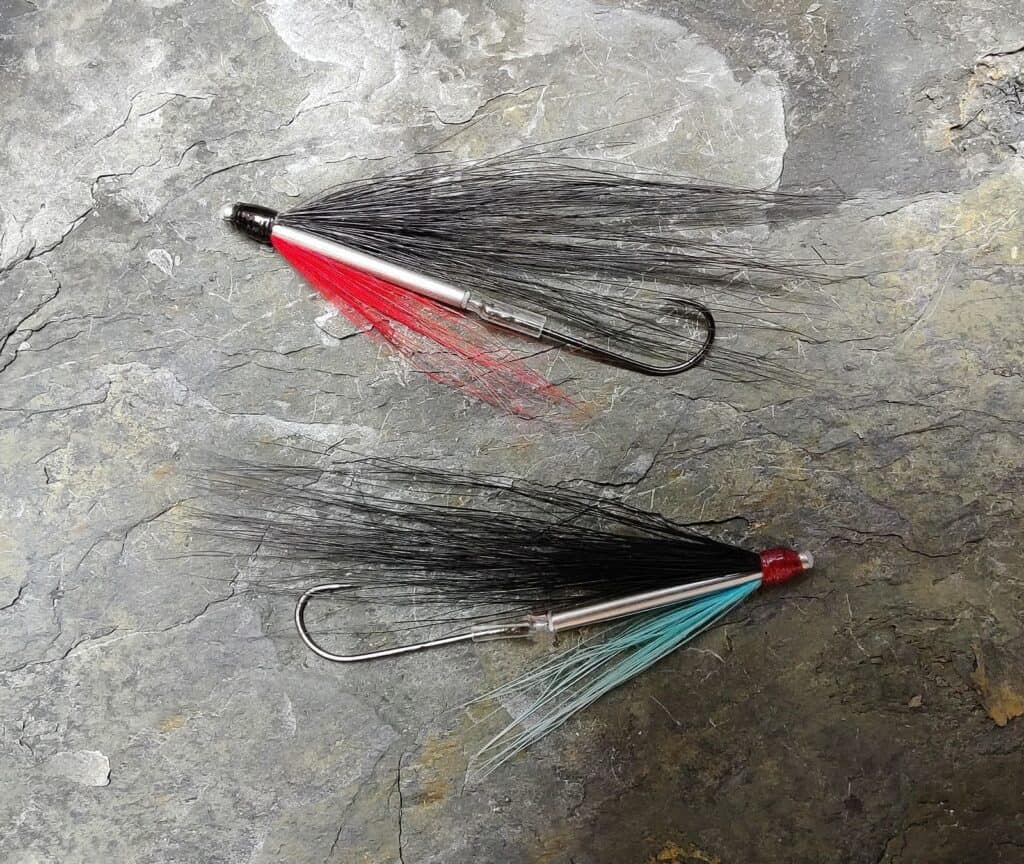
Salmon fly fishing is associated with a broad range of specialist flies and fly hooks. For a long time, throughout the nineteenth century and most of the twentieth century, single hooks were the popular choice for salmon flies. The art of the salmon fly dresser reached its height in the Victorian era, when the earlier rather drab Scottish fly patterns of William Scrope (e.g. Meg in her Braws, Kinmont Willie) were supplanted by a flood of highly complex and exotic creations (Jock Scott, Silver Doctor, Dusty Miller, Mar Lodge), some dressed on very large hooks for fishing the high and cold waters of early Spring. The popularity of these gaudy patterns continued into the twentieth century when they were gradually modified, simplified and supplemented by simpler salmon flies. First the low water style of fly dressing was applied to earlier patterns (Logie, Jeannie, Blue Charm). Then, particularly from the 1950’s, began the development of the modern hairwing salmon fly (Hairy Mary, Garry, Stoat’s Tail, Munro’s Killer), which we know so well today. Double and treble fly hooks are now favoured by many salmon fly fishermen, in preference to the traditional single hooked patterns. In recent years, there have been many developments in salmon fly design, largely based on the use of tubes of different shapes, sizes and materials. Because the use of tubes allows the hook – single, double or treble, barbed or barbless – to be changed when required or when damaged, this adds greatly to the versatility and durability of a salmon or sea trout fly. Most of my salmon flies are now dressed, in varying lengths, on fine stainless steel needle tubes, creating a fly with a similar weight and profile to a fly dressed on low water double, but much more durable, as the hook can easily be replaced when damaged. See also Tube Flies
Salmon Tube Fly Hooks
Salmon Tube Flies can be used with single, double or treble hooks. Indeed, a variety of hooks are now sold, by companies such as Loop, Partridge, Fulling Mill and Ken Sawada, specifically for use with tube flies.
If using a well made treble hook, with all arms of the treble of equal weight, the positioning of the treble will make no difference to the way the fly swims. The treble hook will be in a state of balance, and equally stable, no matter how the arms of the hook lie and will have no natural tendency to rotate to reach a particular position. A treble hook, either dressed or attached to a tube fly, will swim naturally with the bulkiest/most buoyant materials on top.
The attachment of single and double hooks will be more influential in determining the way the fly swims. An undressed single or double hook will, as a rule, tend to swim naturally, and will be most stable, with hook points up. So, when attaching a single or double hook to the rear of a tube fly, it would be advisable to connect it with the hook points uppermost, i.e. hook points towards the bulkiest, most buoyant side of the tube. This will add to the stability of the tube fly, reducing any tendency for the fly to swim upside down or on its side. Other benefits of setting the double or single hook with the points uppermost are a) the hair wing cannot become caught up on the underside of the fly and b) in the Autumn, the hair wing acts to an extent as a weed guard, reducing the likelihood of leaves being hooked while fishing. The above observations apply equally to flies dressed on single or double hooks. Since undressed single and double hooks tend to swim naturally with hook points upward, a fly tied with the bulk of the dressing (the wing) applied on the hook-point side will be more stable when fishing, with less tendency to swim upside down (which in this case would involve the fly swimming with hooks, and wing, facing downward) or on its side. (see also Upside Down Flies)
Attaching the Hook to the Tube Fly
A great advantage of tube flies is that the hook used at the rear end can be selected according to conditions and may be very easily changed or replaced, for example when damaged, thus extending the usable life of the tube fly. A common method of attaching the hook is to fit a short length of flexible tubing such as PVC or silicone rubber over the rear of the tube fly and then insert the hook into this flexible sleeve. This is a very effective way of keeping the hook in the desired position behind and in line with the tube, while the flexibility of the hook link tubing minimises leverage on the hook when a hooked fish is being played. A single, double or treble hook may be so employed depending on circumstance, preference and regulation.
Conventional method of tube fly hook attachment employing a silicone sleeve
Many fishermen, however, prefer to allow the tube fly hook to swing entirely freely behind the tube fly, believing that this freedom of hook movement makes for more efficient hooking of the fish and presents minimal leverage when the fish is in play. The tube itself often slides up the line out of the way when a fish is hooked.
However, if the hook is simply tied to the line behind the tube, there is a risk that the hook will not swim in line with the tube as intended but may instead slide round on the knot to stick out at an angle behind the tube. There is also a risk of increased abrasion, and associated weakening, of the nylon knot as the tube moves up and down the line when being cast. To prevent this, various protective sleeves, often referred to as swing tubes, have been devised, commonly using short lengths of various kinds of plastic tubing, e.g. PVC or silicone tubing, to protect the knot and help ensure that the hook swims, as far as possible, in a straight line behind the tube fly.
The Heat Shrink Knot Guard
First described by John Gray in Trout and Salmon Magazine, April 2022
Illustrated below is a simple method of making such a knot guard/protector. The resulting knot guard, made here simply from clear, thin-walled, light weight heat-shrink tubing, has the advantage of being very fine, unobtrusive and inconspicuous, which is particularly important when using very fine tubes such as needle tubes, for example in sea trout night fishing or salmon fishing in low clear water.
Making the Heat-Shrink Knot Guard – Step 1
Cut a short length of heat shrink tubing (I would suggest about 5 to 7 millimetres in length), being careful to cut the ends at right angles. Secure a fairly heavy sewing needle in a fly tying vice and slip the heat shrink tube on to the end of the needle, with the outer end lying over the taper of the needle. This makes it easier to slide the heat shrink tube off the needle when set.
Alternatively, the heat shrink tubing may be mounted on the end of a metal tube of suitable diameter with a millimetre or two of heat shrink extending beyond the end of the metal tube. An unlined stainless steel needle tube of 1.5mm diameter is ideal for the 1.6mm heat shrink tubing or the 1.8mm needle tube for the 2.0mm heat shrink tubing. In either case, apply the flame carefully as in this illustration, shrinking only the first millimetre or two of heat shrink tubing.
Making the Heat-Shrink Knot Guard – Step 2
Hold a lighter flame near the point of the needle, gradually moving the flame closer to the end of the heat shrink tube, being careful not to allow the flame to touch the tube.
Making the Heat-Shrink Knot Guard – Step 3
Slowly and carefully move the flame close to the end of the heat shrink tube until the closest millimetre of tubing shrinks on to the taper of the needle. Allow to cool before sliding the heat shrink knot guard off the needle. It is now ready for use.
Heat Shrink Knot Guards may be made in a variety of colours and sizes, for use with single, double or treble hooks. I have found the 1.2/0.6mm of heat-shrink tubing suitable for fine single hooks up to about size 8 (i.e. tubing with an inside diameter of 1.2mm, shrinking to 0.6mm when heated – the starting (unheated) outside diameter is approximately 2mm). I use this size, particularly for sea trout, with needle tubes with a diameter of 1.5mm and 1.8mm and fine, small-eyed single hooks size 10 and 8. For salmon fishing, heat shrink tubing of a larger internal diameter (1.6mm, 2.0mm and 2.4mm) may be matched to larger tubes and hooks (single, double or treble).
The 1.6/0.8mm, in particular, and 2.0/1.0mm heat shrink tubing are probably the most generally useful sizes for British salmon fishing. Note that heat shrink tubing in the larger diameters will also accommodate heavier leader material and larger knots.
Various Coloured Knot Guards made using 1.2mm and 1.6mm diameter heat shrink tubing
Using the Heat-Shrink Knot Guard
Slip your tube fly onto the leader, then slip on a knot guard. Now tie on your chosen hook, be it a single, double or treble, and pull it into the knot guard, as shown below. Allow the tube to slide back down the leader, to rest on the end of the knot guard. In the first two photographs below, I have used a Needle Tube Fly dressed on a 15mm long needle tube, diameter 1.5mm, 12lb Maxima Chameleon nylon and a size 8 Gamakatsu F31 hook, with a knot guard made using clear heat-shrink tubing size 1.2/0.6mm. Other examples are shown using shorter shank tube singles, doubles and treble hooks.
N.B. All single and double hooks, if allowed to swing freely, will tend to swim with hook point uppermost.
For more information on free-swinging tube fly hooks and heat-shrink knot guards see:

